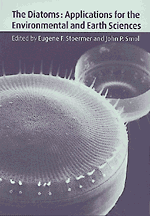Book contents
- Frontmatter
- Contents
- Contributors
- Preface
- Part I Introduction
- Part II Diatoms as indicators of environmental change in flowing waters and lakes
- Part III Diatoms as indicators in extreme environments
- 9 Diatoms as indicators of environmental change near arctic and alpine treeline
- 10 Freshwater diatoms as indicators of environmental change in the High Arctic
- 11 Diatoms as indicators of environmental change in antarctic freshwaters
- 12 Diatoms of aerial habitats
- Part IV Diatoms as indicators in marine and estuarine environments
- Part V Other applications
- Part VI Conclusions
- Glossary, and acronyms
- Index
11 - Diatoms as indicators of environmental change in antarctic freshwaters
Published online by Cambridge University Press: 16 January 2010
- Frontmatter
- Contents
- Contributors
- Preface
- Part I Introduction
- Part II Diatoms as indicators of environmental change in flowing waters and lakes
- Part III Diatoms as indicators in extreme environments
- 9 Diatoms as indicators of environmental change near arctic and alpine treeline
- 10 Freshwater diatoms as indicators of environmental change in the High Arctic
- 11 Diatoms as indicators of environmental change in antarctic freshwaters
- 12 Diatoms of aerial habitats
- Part IV Diatoms as indicators in marine and estuarine environments
- Part V Other applications
- Part VI Conclusions
- Glossary, and acronyms
- Index
Summary
Introduction
The Antarctic continent holds the majority of the earth's freshwater in the form of ice. However, life is dependent upon liquid water, which is scarce in Antarctica. Less than 5% of the continent is ice-free, and it is within these ice-free regions that freshwater lakes and ephemeral streams form by the melting of glacial ice. Ice-free regions are located primarily near the Antarctic coastline (Fig. 11.1). Of these regions, the ‘desert oases’ of East Antarctica are considered to be the coldest, driest regions on earth.
Within the limited sites where liquid freshwater is found, life is present. Cyanobacteria are the most widely distributed and abundant freshwater organisms, forming mats in lakes, ponds, and meltwater streams and on moist soils. Higher plants occur only in lower latitudes of the Antarctic Peninsula. Diatoms are found in nearly all types of Antarctic waters, and are one of few organisms that are well preserved as fossils. In this chapter, we review the investigations to date in Antarctica concerning the application of diatoms to problems of environmental change.
Antarctic diatoms
The study of freshwater algae in Antarctica began with early expeditions to the most accessible subantarctic and maritime islands of Kerguelen and South Georgia (Reinsch, 1890; Carlson, 1913). The flora of Kerguelen has been the most studied of any of the Antarctic regions (Bourrelly & Manguin, 1954; Germain & Le Cohu, 1981; Le Cohu, 1981; Le Cohu & Maillard, 1983, 1986; Riaux-Gobin, 1994).
- Type
- Chapter
- Information
- The DiatomsApplications for the Environmental and Earth Sciences, pp. 245 - 263Publisher: Cambridge University PressPrint publication year: 1999
- 19
- Cited by



